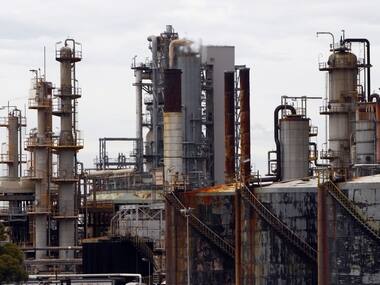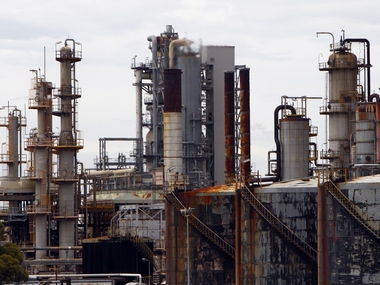Oil prices rose to nearly USD 103 a barrel Tuesday amid concerns about tensions between the West and Iran, a national strike which could affect oil production in Nigeria, and growing investor optimism that the US economy is improving, which would boost crude demand.
By midday in Europe, benchmark crude for February delivery was up USD 1.54 to USD102.85 a barrel in electronic trading on the New York Mercantile Exchange. The contract fell 25 cents to $101.31 in New York on Monday.
In London, Brent crude was up 97 cents at USD113.42 a barrel on the ICE Futures exchange.
Oil prices have hovered above USD 100 this month as signs of a strengthening US economy bolster investor confidence.
[caption id=“attachment_178060” align=“alignleft” width=“380” caption=“Oil prices have hovered aboveUSD100 this month as signs of a strengthening US economy bolster investor confidence.Reuters”]
 [/caption]
[/caption]
Traders will be closely watching fourth-quarter corporate earnings reports, which began Monday, along with the latest data on retail sales, jobless claims and consumer sentiment later this week. The Dow Jones industrial average rose 0.3 percent Monday.
“Oil feels like a market that wants to head lower but is being precluded by a steady tone to equities, particularly within the US,” where good economic news continues, energy analyst Ritterbusch and Associates said in a report.
Tension between Iran and Western powers over Iran’s nuclear programme also has helped keep crude above $100. The US has recently enacted new sanctions targeting Iran’s central bank and its ability to sell petroleum abroad, and Europe is planning to restrict oil imports from Iran.
Iran has threatened to close the key Strait of Hormuz at the mouth of the Persian Gulf if the country’s oil exports are undermined by US or European sanctions.
Protests and a national strike in Nigeria over soaring fuel prices and government corruption also contributed to higher crude prices. Nigeria produces about 2.4 million barrels of oil a day and remains a top crude supplier to the US.
While Nigeria’s oil production appeared to be continuing, unions representing oil workers also have pledged to strike.
A 6 percent annual rise in oil imports by China was another bullish factor for crude.
“Because China has recently much reduced its imports from Iran due to disputes over payment, the country will need to source its demand elsewhere, which could drive prices further upward,” said a report from Commerzbank in Frankfurt.
Investors will also be monitoring fresh information on US stockpiles of crude and refined products.
Data for the week ending 6 January are expected to show a draw of 1 million barrels in crude oil stocks and an increase of 1.75 million barrels in gasoline stocks, according to a survey of analysts by Platts, the energy information arm of McGraw-Hill Cos.
The American Petroleum Institute will release its report on oil stocks later Tuesday, while the report from the Energy Department’s Energy Information Administration - the market benchmark - will be out on Wednesday.
In other Nymex trading, heating oil gained 2.42 cents to $3.0972 a gallon, and gasoline futures added 2.42 cent at USD 2.7832 per gallon. Natural gas futures were down 2.7 cents to USD2.984 per 1,000 cubic feet.
AP
)